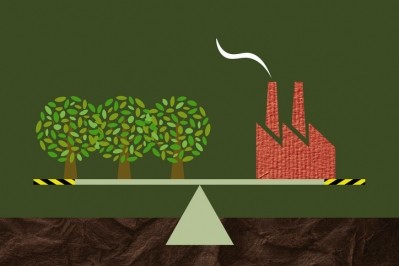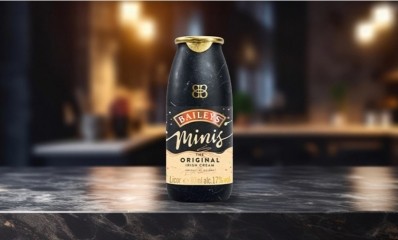Five top coffee trends for 2024

1. Specialty coffee
Specialty coffee is going from strength to strength. A survey in April from the National Coffee Association showed that 57% of American adults had drunk a specialty coffee over the past week - up 7.5% year on year.
But what is specialty coffee, exactly?
Generally speaking, it's about finding the highest quality beans and creating a premium coffee experience.
Sustainability is likely to be a cornerstone of a specialty coffee, as is the story behind the farmers and its origin.
Who better to define specialty coffee than the Specialty Coffee Association? "Specialty coffee can consistently exist through the dedication of the people who have made it their life's work to continually make quality their highest priority," says the organization.
Most importantly, it's about considering coffee as a whole ecosystem: from the farmer, to the green coffee buyer, to the roaster, and finally to the barista.
"This is not the work of only one person in the lifecycle of a coffee bean; specialty can only occur when all of those involved in the coffee value chain work in harmony and maintain a keen focus on standards and excellence from start to finish."
Within specialty coffee, single origin coffee is the one to watch - those grown within a single geographic area with unique characteristics and tastes.
Nespresso, for example, is working on a multi-year project to reviving coffee production in forgotten areas.
2. The rise of RTD: iced coffee, cold brew, nitro and more
RTD needs no introduction: iced coffee, cold coffee and even nitro coffee are everywhere.
But those who think the category is about summer brews or novelty drinks are missing the point.
A dive into the category's audience shows it's the mass direction of travel for the category: Gen Z is far more likely to drink an RTD coffee than the traditional hot version. That means coffee brands need to get into the RTD game - or risk future declines.
Beverage giants have been quick to recognize the opportunities. PepsiCo has long enjoyed a partnership with Starbucks to distribute the coffee giant's RTD coffee in the US; Nestle and Starbucks have teamed up for Asia, Oceania and Latin America.
And when Coca-Cola acquired Costa Coffee - the world's second largest coffee chain - it identified RTDs as one of the key areas for the brand's growth.
What to watch in RTD coffee? As a category that's largely about indulgence, fancy flavors are one way to draw people in. Chocolate, peanut butter, salted maple, cookies and cream are all flavors that offer classic, irresistible combos.
But it's worth thinking more adventurously. Research from FMCG Gurus shows that 74% of global consumers say they're keen on new and unusual flavors, with 77% saying they're drawn to limited edition flavors. That could mean unique botanicals and spices - such as turmeric and spirulina - or espresso tonics with bright and tart fruit flavors such as blood orange, grapefruit and cranberry.
3. Alternative milks – barista style
Alternative milks were once just there for lactose intolerant consumers, and generally limited to soy milk.
Now, a variety of alternatives – think almond and oat – are available.
Some consumers make the switch for ethical reasons - concerns around the treatment of cows, or concerns about dairy’s impact on the environment).
Others do so for health (while the nutritional value of milk alternatives can vary, they often have less fat than dairy milk).
But what’s most interesting about the alternative milk trend is that it’s gone well beyond being a questionable substitute for traditional dairy milk.

The last year has seen a rise in ‘barista-style’ alternative milks that froth up satisfactorily.
These assure consumers that alternative milks are not a compromise, but a choice that can create a carefully crafted cappuccino just as well as dairy.
The same can be seen in the coffee creamer category.
Plant-based creamers grew 13% in dollar sales and 9% in unit sales in 2023, according to Nielsen data.
The result is that plant-based milk brands are increasingly thinking about the coffee consumer.
The catch?
Despite the outcry among the growing number of alternative milk consumers, coffee shops still often charge more for alternative milks.
4. Functional coffee
Coffee is a functional beverage category by its very nature alone.
Coffee competitors
A growing number of brands are launching as alternatives to coffee: offering energy without the jitters or crash associated with coffee by turning to nootropics, adaptogens or similar.
While currently a niche category, these could emerge as key competitors if they gain widespread popularity.
With caffeine as a natural stimulant, consumers turn to the drink to get going in the morning or for pick-me-up energy throughout the day. An 8-ounce cup of coffee can be expected to contain around 90mg of caffeine.
The next step is what other functional benefits coffee can provide. That could be drinks with collagen, adaptogens, protein or CBD.
5. Sustainability
Coffee is a drink that’s generally consumed a long way away from where it’s grown. That means that – why consumers happily champion ‘being sustainable’, honing down what that means for the coffee category is more complicated.
Research shows that – on mass – today’s consumers are far from understanding the nuances of the category. A recent survey from Nestle found that 1 in 4 UK consumers have 'no idea' where coffee comes from - with 1 in 20 even thinking it's farmed in the UK.
But the likes of Fair Trade have spend decades championing equitable coffee, while the rise of specialty coffee has also helped highlight social and environmental issues behind each bean.
The issues for coffee range from sourcing (where does coffee come from? Are farmers receiving a fair wage?) to packaging (while much noise has been made of the waste created by disposable coffee cups, the reality is these still remain the default for many coffee shops and consumers).
On a macro scale, climate change is likely to start changing where coffee can be grown. And this in turn could also change the type of coffee we drink.
While some 70% of the world's coffee production is Arabica, the species is very sensitive and has a low tolerance to rising temperatures and disease. Researchers suggest that some 60% of land currently used for coffee cultivation could be affected by climate change by 2050.
Plant scientists are focusing on new, higher-yielding Arabica varieties with a greater resistance to disease and drought.
And they're also looking to 'forgotten' wild coffee species - those that have fallen by the wayside since Arabica and Robusta became the dominant duo - but could hold the key to climate change resistance.











